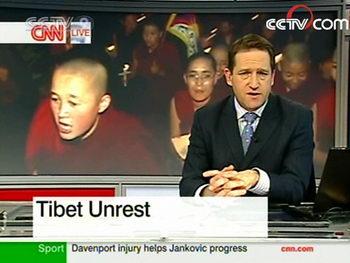Some people have questioned the reliability of some of the western media's coverage on Tibet. And as the two sides remain far apart on the issue, the public keep looking for the truth.
|

|
|
Some western media have described a very different scene.
|
(CCTV March 24, 2008)
Professor Bob Podesta, Visiting American Scholar said "One of the problems as a reporter in trying to put together the story is that many media has their own angle and approach to a particular story. Some might call it bias, but together when you bring all the media together, you get a more complete picture."
Access to the information is important. At the moment, Lhasa is still off limits to western journalists due to security reasons. So their reports are based on how Tibet is perceived. But with the gradual exposure of the region to the outside world, the Chinese are hoping their coverage of fighting the riot in Tibet will be better understood worldwide.
Over the past years, the portrayal of China in the western media has been fairly balanced, due to China's improved relations with major powers and growing openness to the outside world. But the Tibet issue seems to pull this trend back to the old China cliches. The press may soon lose interest, and people might see that information about the 'crackdown' may not be so reliable.